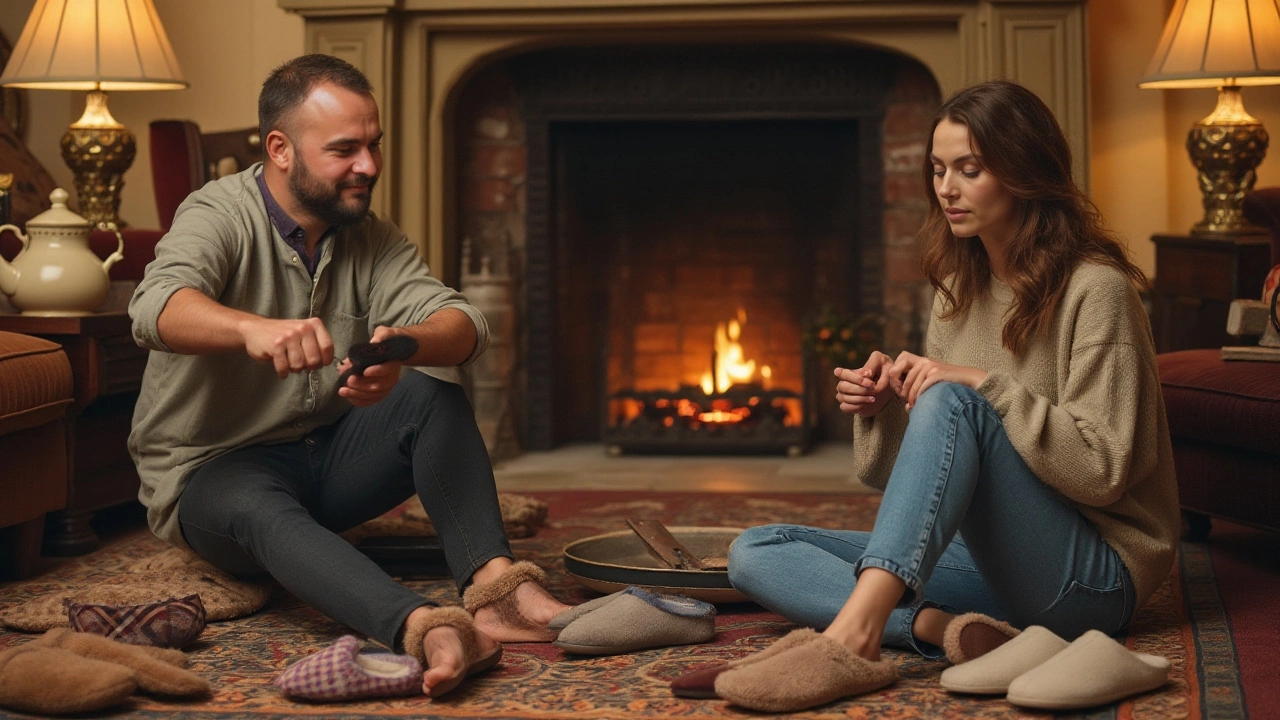Slipper Sizes – Find the Right Fit Every Time
Ever bought slippers that felt too tight or slid off your feet? It usually comes down to one thing – the size. Getting the right size isn’t magic; it’s just a few easy steps you can do at home. Below we break down how to measure, read charts, and choose the best fit for any style.
How to Measure Your Foot at Home
All you need is a piece of paper, a pen, and a ruler. Stand on the paper, keep your weight evenly distributed, and trace the outline of your foot. Measure the distance from the heel to the longest toe. Do this for both feet – often one foot is a bit bigger, so use the larger measurement.
Take the length in centimeters (or inches) and add about 0.5 cm (or 0.2 in) for a tiny bit of wiggle room. That extra space prevents toe cramps and lets the slipper material stretch a little. If you’re buying wool or leather slippers that mold to the foot, you can stay closer to the exact length; for floppy house shoes, give a bit more room.
Reading Size Charts and Brand Differences
Every brand labels sizes a little differently. Some use UK, EU, or US numbers, while others go by letters (S, M, L). Pull up the specific chart for the brand you like – most sites show a conversion table. Match your measured length to the chart, then check the width column if it’s provided.
When a chart shows a range (for example, 9‑10 cm = size 38‑39), aim for the higher end if you’re between sizes. That little extra means less pressure on the toes. If the brand offers a “wide” option, choose it if your foot feels snug even after adding the wiggle room.
Here’s a quick cheat: for adult women's slippers, size 38‑39 usually fits a foot length of 24‑25 cm; men’s size 42‑43 fits 26‑27 cm. Kids grow fast, so add a half size to give them room to play.
Don’t forget the heel height. Slippers with a slight heel need a bit more space in the toe box because your foot slides forward a little when you stand.
Now that you know how to measure and read charts, you can shop with confidence. Whether you’re eyeing cozy wool sheepskin slippers, breathable cotton house shoes, or a pair of handcrafted Elgin‑made designs, the right size makes the difference between comfort and disappointment.
Finally, always check the return policy before you buy. Even with perfect measurements, a brand’s fit can feel different on your foot. A hassle‑free return lets you try them on at home and exchange if needed. Happy slipper hunting!

Are Slipper Sizes the Same as Shoe Sizes? Discover the Differences
Choosing the right size for slippers can be trickier than it seems, as many factors influence sizing, differing often from regular shoe sizes. Understanding these differences ensures comfort and proper fit, whether buying for oneself or as a gift. This article explores the nuances between slipper and shoe sizes, provides tips for finding the best fit, and highlights unique considerations such as material and style. Learn about the implications of slipper design on sizing, and discover practical advice to make your next slipper purchase a perfect fit.




